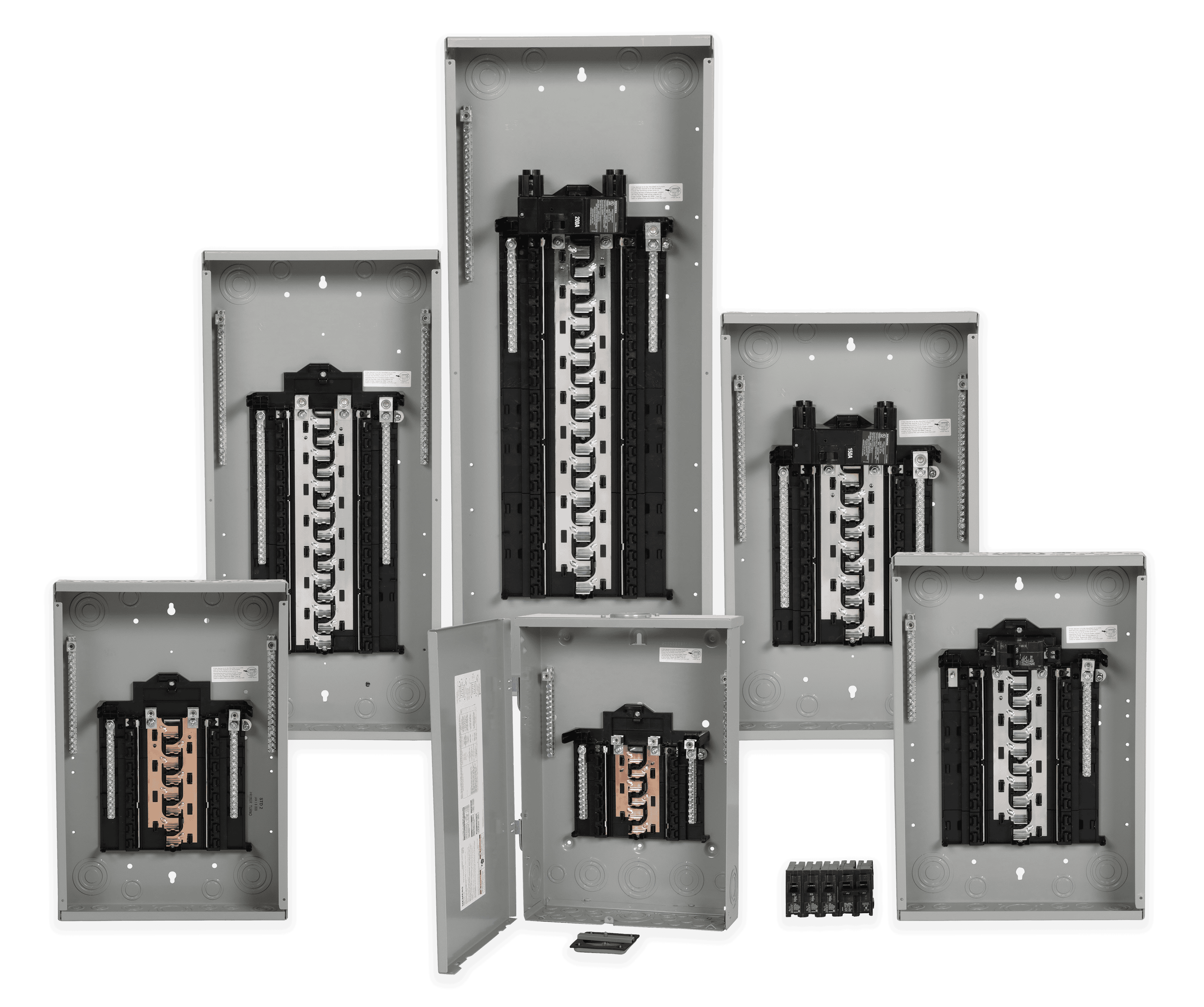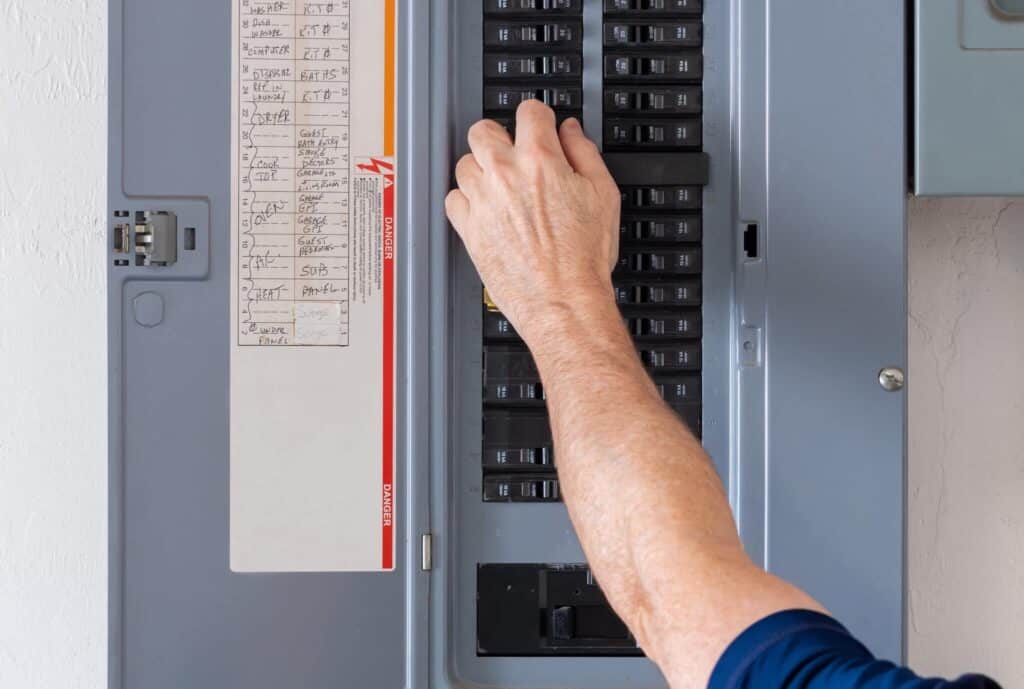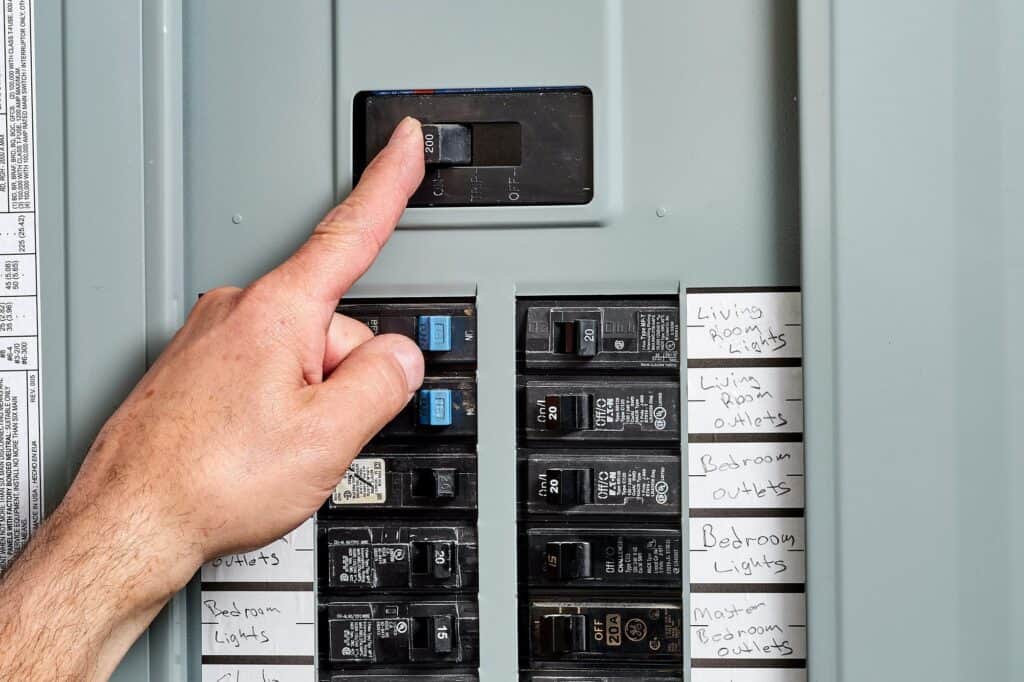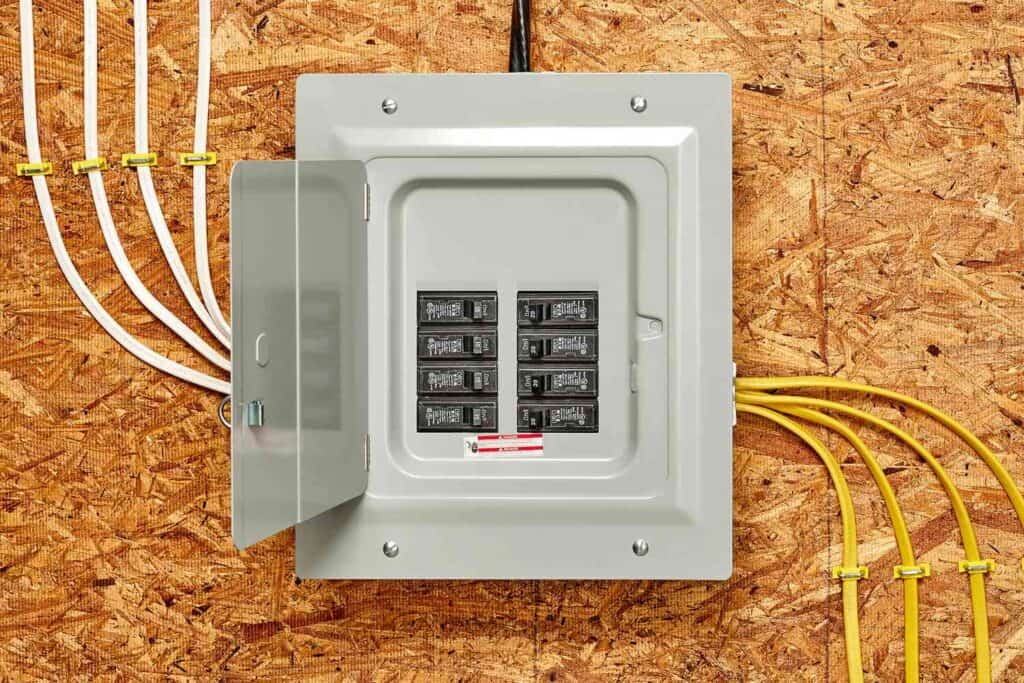Electrical Panel Upgrade Cost
Does your electrical panel need additional spots for more electric appliances? Is your panel struggling with modern demands? Discover the key considerations for electrical panel upgrades in this comprehensive guide.
The typical electrical panel upgrade cost was $4,500 to $5,800 for our customers in 2023*, including a 200A meter bypass combo, breakers, cold water grounding and other code compliance measures with permitting. Electrical panel upgrade and electrical service upgrade costs vary widely between projects. Read our comprehensive guide below to learn more!

- Updated March 26, 2025
- By: Editorial Staff

What is an Electrical Panel Upgrade?
When people say “electrical panel upgrade,” they often mean an electrical service upgrade, which requires more work than just replacing an electrical panel.
An electrical panel upgrade is a process that involves replacing an outdated or insufficient electrical panel with a new, modern one that meets current safety standards and can handle the increased electrical demands of a home. The main reasons for upgrading an electrical panel include:
- Insufficient capacity for modern electrical needs
- Outdated or unsafe panel (e.g., Federal Pacific, Zinsco, or Challenger panels)
- Adding new appliances or electrical equipment
- Adding Heat Pumps or Heat Pump Water Heaters
- Preparing for home renovations or additions
A service upgrade involves replacing the meter socket, main service cable, and grounding system in addition to the panel. Low prices of $1,500 to $3,000 advertised online for electrical panel upgrade cost, often only cover the panel replacement and not the full scope of work required for a complete electrical service upgrade.
Factors Influencing Panel Upgrade Prices
Several factors can impact the cost of an electrical panel upgrade, including:
What's Included in an Electrical Service Upgrade?
A complete electrical service upgrade typically includes:
- Installation of a new 200 AMP panel & meter with bypass combo
- Replacement of the main service cable from the meter to the panel
- Grounding to cold water pipe or ground rod
- Installation of a whole house surge protector
- Installation of an outdoor service GFCI receptacle (if required by local code)
- Other code compliance work
- All permitting, inspection, and associated fees
Most often, if a homeowner is upgrading their panel with us, we will use the common maximum panel size which is 200A in Colorado.
Code Requirements for Panel Upgrades in 2024
As of 2024, code requirements for electrical panel upgrades include:
- Installation of a whole house surge protector to protect sensitive electronic equipment from voltage spikes
- Proper grounding to cold water pipe or ground rod to ensure safety and reduce the risk of electrical shock
- Installation of AFCI (Arc Fault Circuit Interrupter) breakers in bedrooms and living areas to protect against electrical fires
- Installation of GFCI (Ground Fault Circuit Interrupter) protection in kitchens, bathrooms, garages, and outdoor areas to prevent shock hazards
- Other items specific to local codes and regulations, such as minimum wire sizes, conduit requirements, and working clearances around the panel
Determining Current Panel Size
To determine the size of your current electrical panel, locate the main breaker, which is usually the largest breaker in the panel. The amperage rating of the main breaker indicates the panel size. Common residential panel sizes include

Upgrading Electrical Panel from 100 to 200 Amps
The cost of upgrading from a 100-amp to a 200-amp panel can vary depending on several factors, such as the age and condition of your home’s existing electrical system, the location of your panel and permitting and inspection fees. On average, homeowners can expect to pay between $4,000 and $6,500 for a complete 100 to 200-amp panel upgrade.
This cost typically includes:
- A new 200-amp meter socket and main breaker
- A new 200-amp panel with circuit breakers
- New wiring and conduit as needed
- Grounding and bonding to meet current codes
- Removal and disposal of the old 100-amp panel and equipment
- Permitting and inspection fees
- Labor costs for a licensed electrician
It’s important to note that the cost may be higher if your home requires additional work, such as upgrading the meter base, replacing the main service cable, or bringing other aspects of your electrical system up to current codes. In some cases, the utility company may need to upgrade their equipment, which can add to the overall cost and timeline of the project.
Power Outage Duration During a Panel Upgrade
During an electrical panel upgrade, power is usually out for 5 to 8 hours on the day of installation. In some cases, the electrician may be able to work around critical circuits to minimize disruption, but it is best to plan for a full day without power. If you have critical electrical needs, such as medical equipment or work-from-home requirements, discuss these with your electrician in advance so they can help you plan accordingly.
Subpanel Installation as an Alternative
Installing a subpanel can be an alternative to a full electrical panel upgrade in certain situations. A subpanel is a smaller electrical panel that is fed by the main panel and can be used to expand the number of circuits in a specific area of the home, such as a garage, workshop, or addition.
The cost of a subpanel installation ranges from $1,800 to $3,500, including permitting and labor for a 50-100A subpanel. This can be a more cost-effective solution than a full panel upgrade if:
- The main panel has sufficient capacity and is in good condition
- The home only needs additional circuits in a specific area
- The home has space for a subpanel in the desired location

Subpanel Benefits and Reasons for Needing One
Subpanels offer several benefits and can be a good solution in various situations, such as:
However, it’s important to note that a subpanel may not be the best solution if your main panel is outdated, in poor condition, or undersized for your home’s electrical needs. In these cases, a full electrical panel upgrade may be necessary to ensure the safety and reliability of your home’s electrical system.
200A to 400A Upgrades
Upgrading from a 200A to a 400A electrical service is a complex and expensive process, particularly for residential homes. The cost associated with such an upgrade can add $10,000 to $15,000 to the project at a minimum in Colorado. This type of upgrade is more common in commercial settings or new construction and is costly to do for existing single-family homes due to the cost and complexity involved.
To complete a 200A to 320-400A upgrade, the following steps are required:
- Engineering and design work to ensure the new service meets all applicable codes and standards
- Separate applications and approvals from the utility company, which may require a load calculation and justification for the increased service size
- Significant changes to the utility company’s transformers, lines, and distribution infrastructure to accommodate the higher amperage
The utility company will require the customer to justify the need for the increased capacity and may ask them to pay for some or all of the costs associated with the necessary infrastructure upgrades. In residential settings, 320 or 400A services are usually installed in ultra-large homes at the time of new construction, where the electrical demands are high enough to warrant the additional capacity. In addition, new ADUs, units or rentals built on existing property often get a second line of service with a maximum capacity of 200A.
Examples of homes that may require a 400A service include:
While it is possible to upgrade existing houses to 400A, it is rare and very costly for residential homeowners in Colorado. The process involves more than typical electrical work. In most cases, homeowners will need to work with an electrical engineer and the utility company to develop a plan and obtain the necessary approvals. Approvals and utility applications may take up to 18 months or more to be processed. In addition, most 400A (or similarly sized) equipment has lead times exceeding 4 to 24 months.
If you’re building an ADU, a mother-in-law suit, an addition or a rental on your existing property, the process for obtaining a second line of electrical service is easier, but just as lengthy. We recommend starting this process as soon as the project’s planning begins.
Electrical panel upgrades are a crucial aspect of maintaining a safe, reliable, and efficient home electrical system. As residential electrical demands continue to evolve, homeowners must be proactive in assessing their panel’s capacity and considering upgrades when necessary.
At UniColorado Heating & Cooling, we understand the importance of keeping your home’s electrical system up to date. Our team of experienced professionals is dedicated to providing comprehensive services, including HVAC, heat pumps, electrification, and electrical panel upgrades. We strive to be your one-stop shop for all your home comfort and electrical needs.
Our licensed electricians have the knowledge and expertise to guide you through the process, ensuring compliance with local codes and regulations while delivering a high-quality installation. We recognize that the cost of an electrical panel upgrade may seem substantial, but we firmly believe it is a necessary investment in your home’s safety and longevity.
By partnering with UniColorado Heating & Cooling for your electrical panel upgrade, you can enjoy peace of mind knowing that your home’s electrical system is in capable hands. Our team is committed to helping you accommodate modern appliances and electronics while enhancing your property’s overall value.
In addition to electrical panel upgrades, we offer a wide range of services designed to maximize your home’s comfort and efficiency. From installing energy-efficient heat pumps to providing comprehensive HVAC maintenance and repairs, UniColorado Heating & Cooling is here to support you every step of the way.
As you embark on your home improvement journey, trust UniColorado Heating & Cooling to be your reliable partner. Contact us today to schedule a consultation and take the first step towards a safer, more efficient home electrical system.
The cost to upgrade an electrical panel varies depending on the scope of work and your location. On average, homeowners can expect to pay between $3,500 and $6,500 for a complete panel upgrade, including labor, materials, and permitting fees. However, prices may be higher if additional work is required, such as updating the meter base or main service cable
Upgrading your electrical panel is often worth the investment, as it ensures your home’s safety, reliability, and ability to accommodate modern electrical demands. An upgraded panel can prevent issues like frequent breaker trips, dimming lights, and insufficient power for appliances and electronics. Additionally, an updated panel can enhance your property’s value and marketability.
Replacing a 200-amp electrical panel typically costs between $3,500 and $5,100, including labor, materials, and permitting fees. This price range assumes that the existing panel is already 200 amps and does not require a service upgrade. If a service upgrade is necessary, the cost may be higher.
Upgrading from a 100-amp to a 200-amp electrical panel typically costs between $3,500 and $6,500. This price includes the new 200-amp meter socket, main breaker, panel, circuit breakers, wiring, grounding, and labor. The cost may be higher if additional work is needed, such as upgrading the meter base or main service cable.
A typical electrical panel upgrade takes about 8-10 hours, or one full day, to complete. However, the total time may vary depending on the complexity of the job and any additional work required, such as updating the meter base or main service cable.
Yes, a permit is required for electrical panel upgrades in most jurisdictions. The permitting process ensures that the work is done safely and in compliance with local building codes. Your licensed electrician should handle the permitting process and include the fees in your project estimate.
Electrical panels typically last 25-40 years, depending on the quality of the installation and the environment. However, you may need to upgrade your panel sooner if you experience frequent breaker trips, notice burning smells or scorch marks, or add significant new appliances or electrical loads to your home. If your home has an older panel with outdated technology, such as a fuse box or a panel with less than 100 amps, an upgrade is strongly recommended for safety and reliability.

